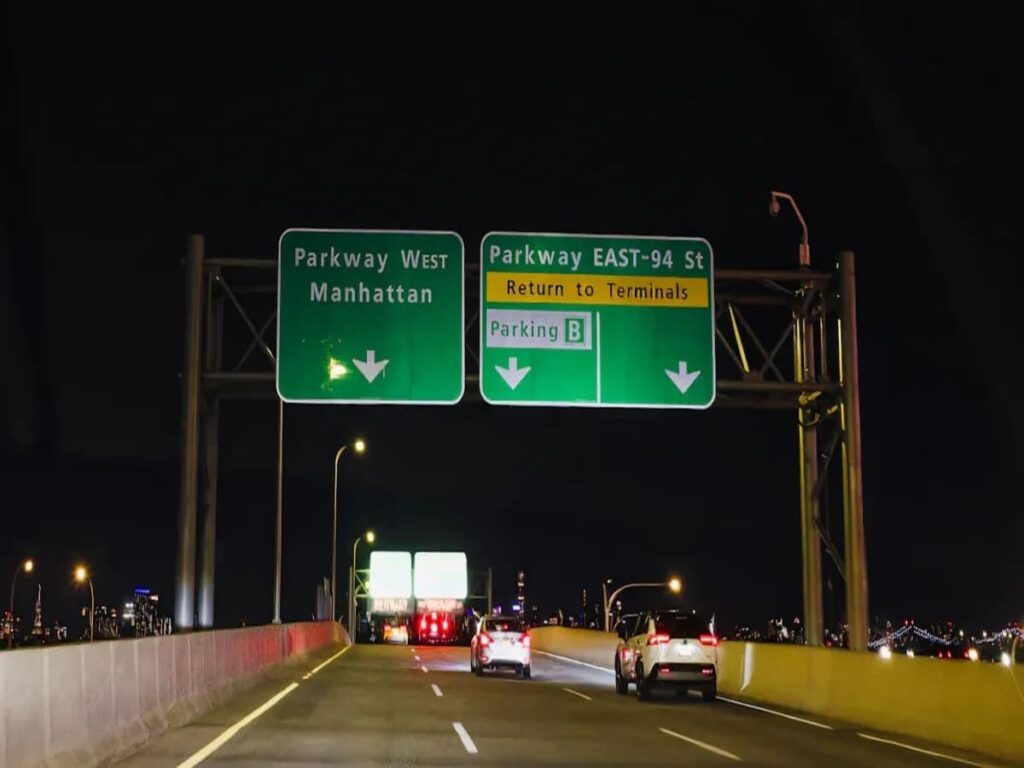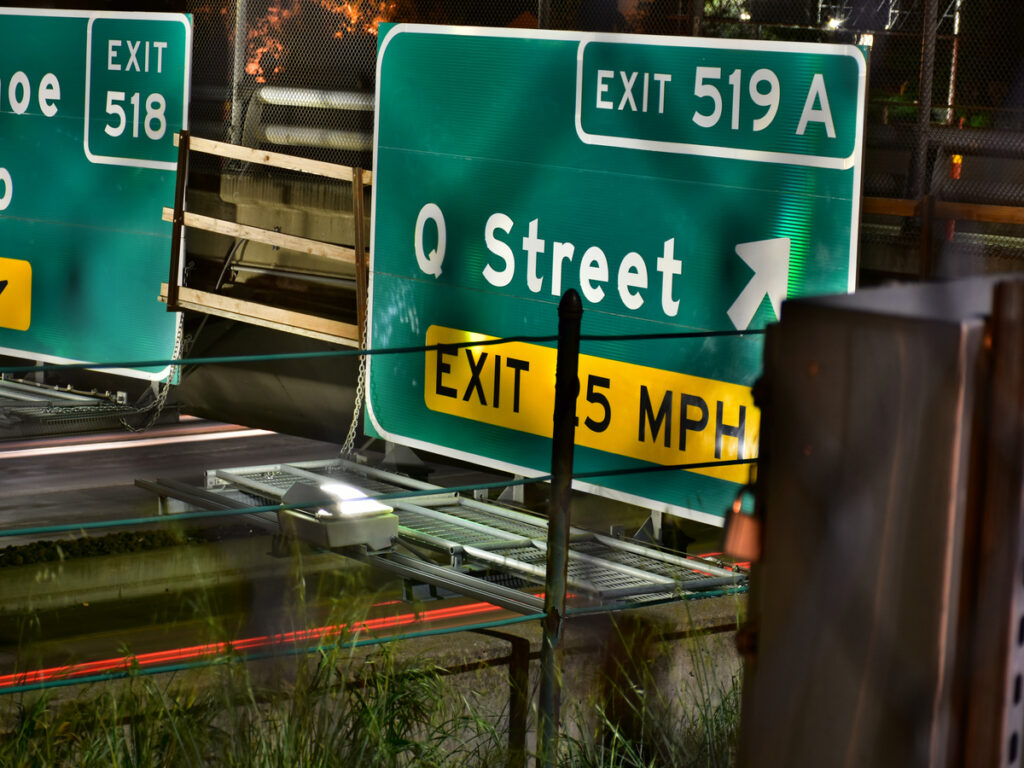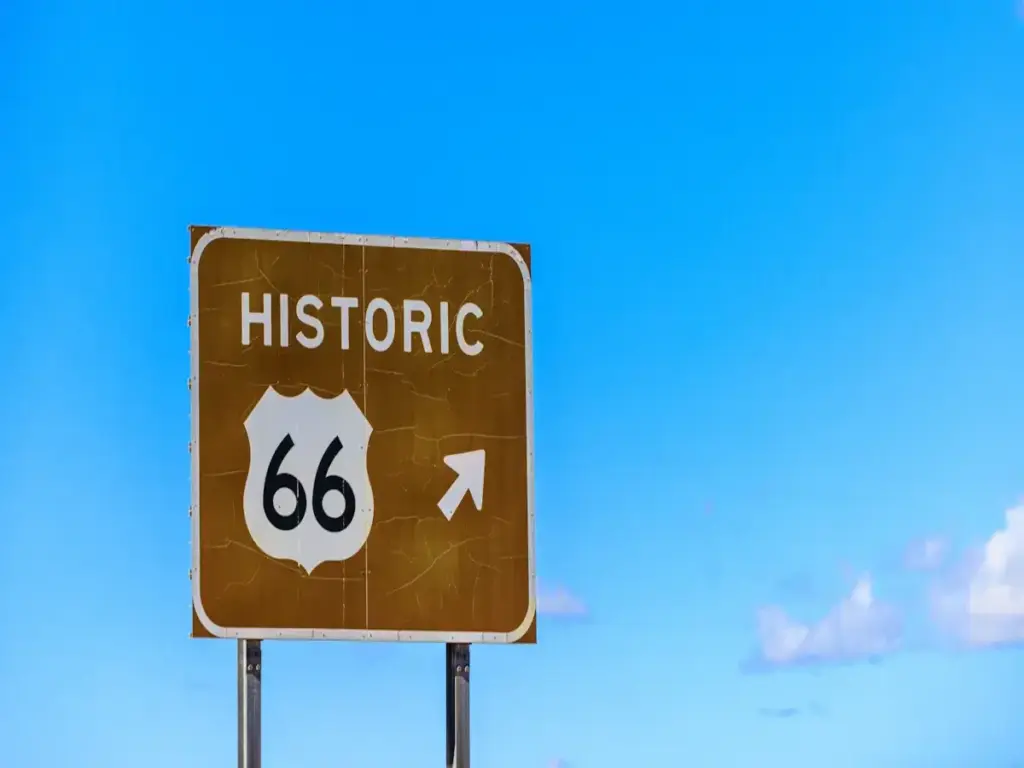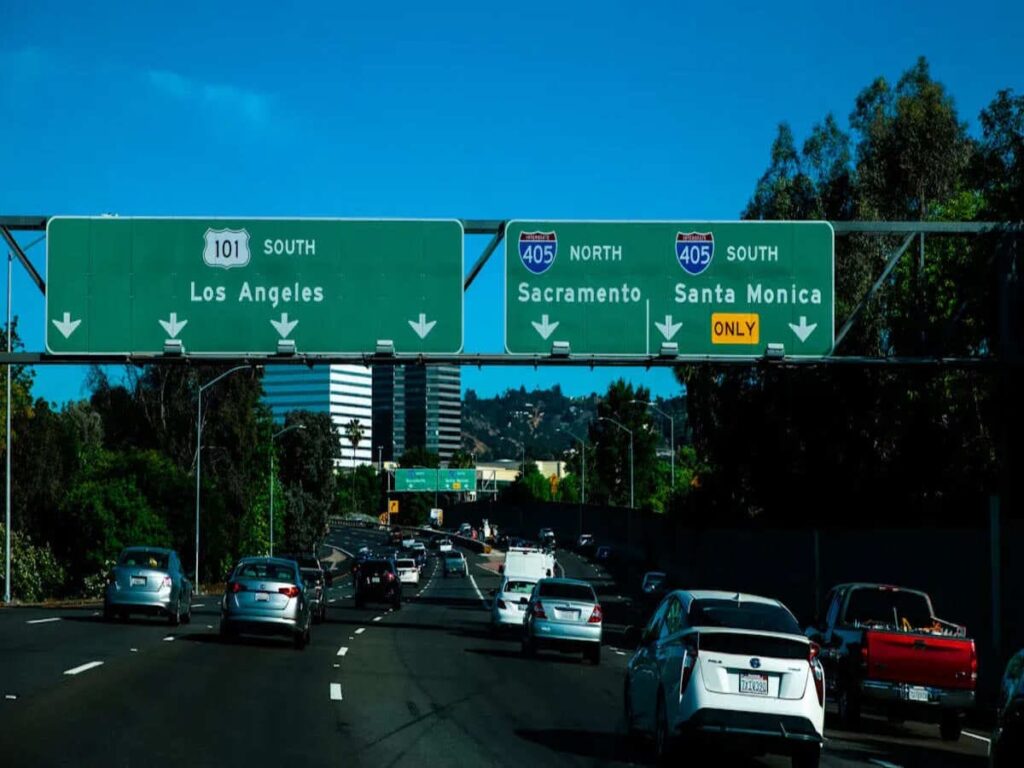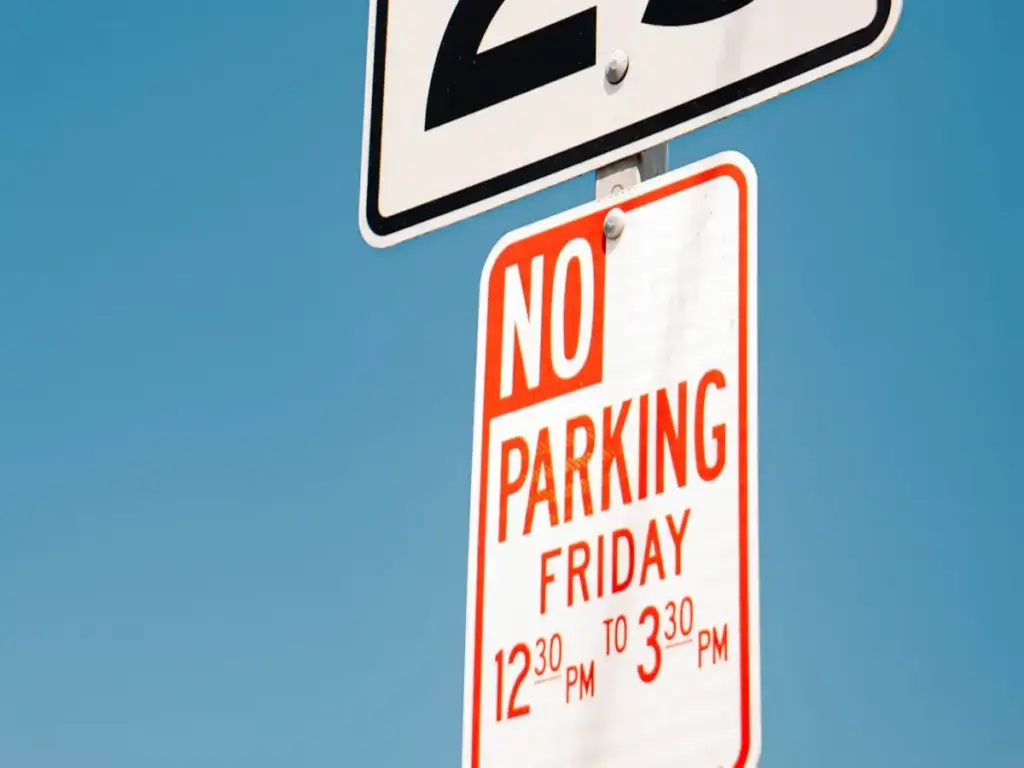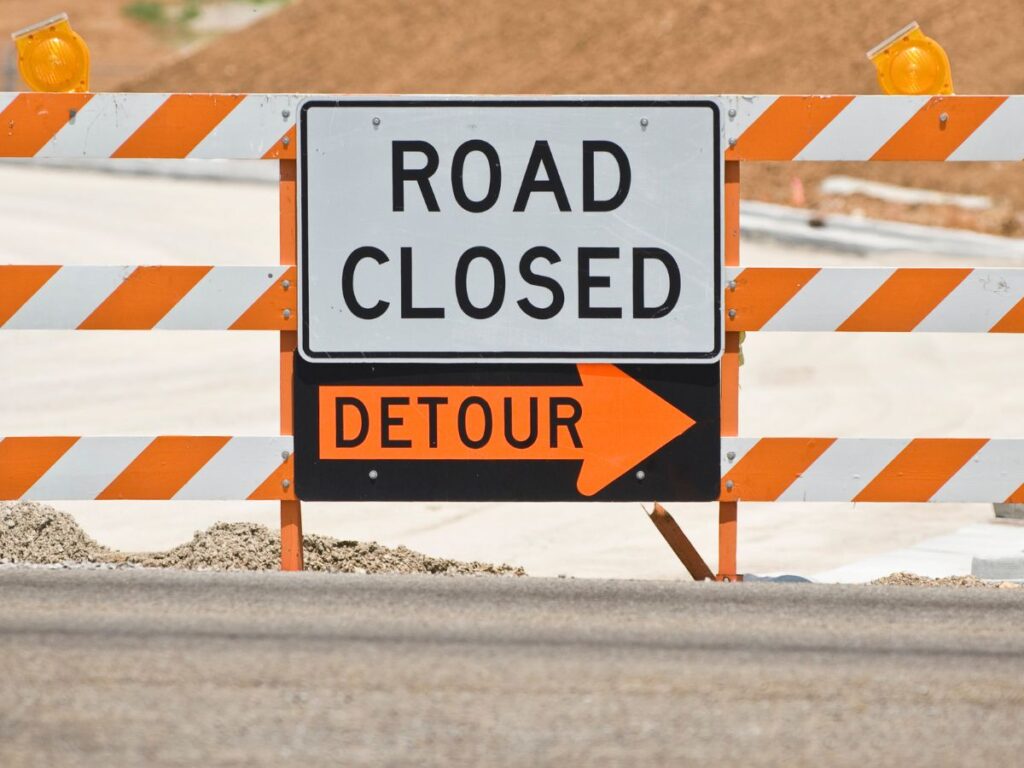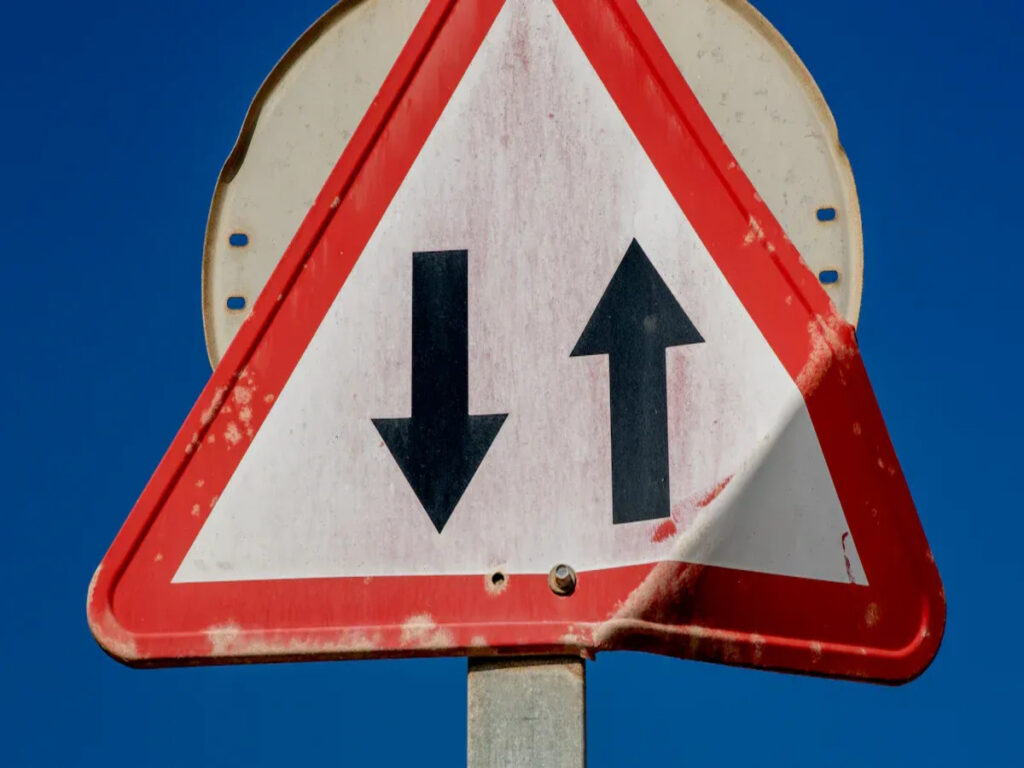
जब आप ड्राइव करते हैं, सुरक्षित रहने के लिए आपको स्पष्ट संकेतों की आवश्यकता है. सड़क का आकार और आप उन्हें कितनी दूर देख सकते हैं. बड़े और उज्जवल संकेत आपको उन्हें तेजी से नोटिस करने में मदद करते हैं. उच्च retroreflectivity के साथ संकेत देखना आसान है. यह आपको जल्द ही संकेतों को हाजिर करने और बेहतर ड्राइव करने में मदद करता है. संकेतों पर स्पष्ट फोंट भी आपको उन्हें जल्दी से पढ़ने में मदद करते हैं. अनुसंधान से पता चलता है कि आप संकेत देख सकते हैं 16% अच्छे टाइपफेस के साथ आगे. पालन करने के लिए एक सरल नियम है. हरएक के लिए 100 मीटर आप देखते हैं, पाठ कम से कम होना चाहिए 100 मिलीमीटर लंबा. यदि आप इन मूल बातों को जानते हैं, आप सभी के लिए सड़कों को सुरक्षित रखने में मदद करते हैं.
ओप्ट्राफिक पर, हम अपने ट्रैफ़िक संकेतों को डिजाइन और निर्माण करते समय इन सिद्धांतों का पालन करते हैं. उच्च-ग्रेड परावर्तक सामग्री से लेकर फ़ॉन्ट आकार और लेआउट के अनुरूप, प्रत्येक यातायात सुरक्षा संकेत दृश्यता मानकों को पूरा करने और सभी सड़क प्रकारों में सुरक्षित ड्राइविंग का समर्थन करने के लिए बनाया गया है.
चाबी छीनना
- बड़े और उज्जवल सड़क संकेत ड्राइवरों को संदेशों को तेजी से देखने में मदद करते हैं. यह ड्राइवरों को प्रतिक्रिया करने और सुरक्षित रहने के लिए अधिक समय देता है.
- इस नियम का उपयोग करें: पत्र होना चाहिए 1 प्रत्येक मीटर के लिए मिलीमीटर लंबा आपको देखने की जरूरत है. यह लोगों को स्पष्ट रूप से संकेत पढ़ने में मदद करता है.
- स्पष्ट फोंट और रंग चुनें जो बाहर खड़े हैं. यह सभी मौसमों में पढ़ने के लिए संकेतों को आसान बनाता है, रात को भी.
- ऐसे संकेत डालें जहां ड्राइवर उन्हें अच्छी तरह से देख सकते हैं. संकेतों को ब्लॉक न करें. लोगों को संकेतों को बेहतर देखने में मदद करने के लिए चिंतनशील सामग्री या रोशनी का उपयोग करें.
- साइन साइज और लेटर हाइट को सड़क की गति और क्षेत्र से मेल खाते हैं. तेज सड़कों पर और जोखिम भरे स्थानों पर बड़े संकेतों का उपयोग करें.
सड़क साइन आकार और सड़क सुरक्षा
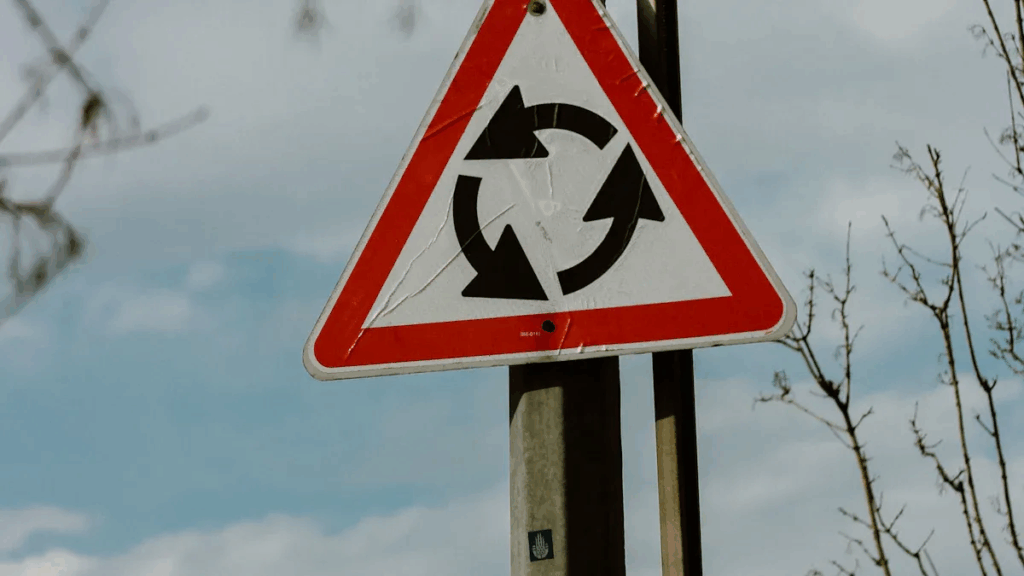
चालक प्रतिक्रिया समय
जब आप सड़क पर एक संकेत देखते हैं तो आपको जल्दी से प्रतिक्रिया करने की आवश्यकता होती है. जिस समय आपको एक संकेत पढ़ना और समझना है, वह आपकी सुरक्षा में एक बड़ा बदलाव ला सकता है. यदि सड़क के साइन का आकार बहुत छोटा है, आप महत्वपूर्ण विवरण याद कर सकते हैं. बड़े और उज्जवल संकेत आपको उन्हें जल्द ही हाजिर करने में मदद करते हैं. यह पुराना है. (2009) पाया कि बड़े और उज्जवल संकेत आपको जानकारी को तेजी से और अधिक सटीक रूप से प्राप्त करने देते हैं. इसका मतलब है कि आप सड़क से दूर देखने में कम समय बिताते हैं, जो आपको केंद्रित और सुरक्षित रहने में मदद करता है. अच्छा सड़क साइन आकार आपको धीमा करने के लिए पर्याप्त समय देता है, लेन बदलें, या जरूरत पड़ने पर रुकें. जब आप स्पष्ट सुरक्षा संकेत देखते हैं, आप बेहतर निर्णय ले सकते हैं और अचानक चालों से बच सकते हैं जो दुर्घटनाओं का कारण बन सकते हैं.
बख्शीश: हमेशा संकेतों के लिए आगे देखें, विशेष रूप से व्यस्त या तेजी से चलने वाले यातायात में. प्रारंभिक पहचान आपको कार्य करने के लिए अधिक समय देती है और आपको सुरक्षित रखता है.
उच्च जोखिम वातावरण
सड़क पर कुछ स्थान दूसरों की तुलना में अधिक खतरनाक हैं. तीखे मोड़, व्यस्त चौराहों, और पहाड़ी सड़कों को अतिरिक्त ध्यान देने की आवश्यकता है. इन उच्च जोखिम वाले वातावरणों में, सड़क सुरक्षा स्पष्ट और दृश्यमान संकेतों पर और भी अधिक निर्भर करती है. ड्राइविंग सिमुलेशन का उपयोग करने वाले अध्ययन से पता चलता है कि अच्छी तरह से डिज़ाइन किए गए संकेत, जैसे कि चर संदेश संकेत, ड्राइवरों को धीमा करने और लेन को सुरक्षित रूप से बदलने में मदद करें. सही सड़क साइन आकार और स्पष्ट संदेश आपको मुश्किल स्पॉट के माध्यम से मार्गदर्शन कर सकते हैं. अनुसंधान से यह भी पता चलता है कि उच्च जोखिम जागरूकता वाले ड्राइवर दूसरों की तुलना में अधिक बार संकेतों से महत्वपूर्ण जानकारी नोटिस करते हैं. इसका मतलब है कि अच्छा साइनेज सभी की मदद कर सकता है, सिर्फ अनुभवी ड्राइवर नहीं. इन क्षेत्रों में सही सड़क चिन्ह आकार का उपयोग करने से आपको यह देखने और समझने का सबसे अच्छा मौका मिलता है कि आपको क्या करने की आवश्यकता है. सड़क सुरक्षा में सुधार होता है जब आप भरोसा कर सकते हैं कि संकेत आपको आगे के खतरों के बारे में चेतावनी देंगे.
- खराब प्रकाश व्यवस्था या बहुत सारे विकर्षणों वाले स्थानों के लिए बड़े संकेत चुनें.
- सुनिश्चित करें कि संकेत चमकीले रंगों और स्पष्ट फोंट के साथ खड़े हैं.
जब आप सुरक्षा संकेतों पर ध्यान देते हैं और उनके निर्देशों का पालन करते हैं तो आप अपनी और दूसरों को बचाने में मदद करते हैं.
न्यूनतम पाठ ऊंचाई और दृश्यता मानक
जैसा 1742 दिशा-निर्देश
रोड साइन टेक्स्ट साइज़ लेने के नियम हैं. The जैसा 1742 दिशा निर्देशों पढ़ने के लिए संकेतों को आसान बनाने में मदद करें. ये नियम इस बात पर ध्यान केंद्रित करते हैं कि आप संकेतों को कितनी अच्छी तरह देख और पढ़ सकते हैं. वे हमेशा हर संकेत के लिए एक न्यूनतम पाठ ऊंचाई नहीं कहते हैं. बजाय, वे दिखाते हैं कि सड़क पर साइन साइज़ से कैसे मिलान करें. आपको इस बारे में सोचना चाहिए कि कारें कितनी तेजी से जाती हैं और ड्राइवर कितनी दूर हैं. दिशानिर्देशों का कहना है कि आपको देखने के प्रत्येक मीटर के लिए एक निश्चित अक्षर ऊंचाई का उपयोग करना चाहिए. उदाहरण के लिए, उपयोग 1 प्रत्येक मीटर के लिए पत्र की ऊंचाई का मिलीमीटर आप चाहते हैं कि साइन को देखा जाए. इसलिए, यदि आप चाहते हैं कि एक संकेत से पढ़ा जाए 100 मीटर दूर, पत्र कम से कम होना चाहिए 100 मिलीमीटर लंबा. यह नियम आपको ऐसे संकेत बनाने में मदद करता है जो ड्राइवर समय में देख सकते हैं और पढ़ सकते हैं.
आप अपने संकेत के लिए सबसे अच्छा पत्र आकार का काम करने के लिए मैथ्स का उपयोग कर सकते हैं. ये गणित के सूत्र देखने की दूरी का उपयोग करते हैं और कितनी तेजी से कारें चल रही हैं. यहां एक तालिका है जो दिखाती है कि विभिन्न मामलों के लिए न्यूनतम पाठ ऊंचाई कैसे खोजें:
| पैरामीटर/अवधारणा | सूत्र/विवरण |
|---|---|
| क्रिटिकल प्रिंट आकार (लॉगमार) | क्रिटिकलप्रिंट्स = VisualAcuity + तीक्ष्णता |
| न्यूनतम बिंदु आकार (पोटी) | Minimumpointsize = 0.09 × देखने के लिए × 10^(क्रिटिकलप्रिंटस) |
| अधिकतम बिंदु आकार (पोटी) | Maximumpointsize = 5.4 × प्रदर्शन |
| नोट | सीएम में देखने के कारण; सीएम में प्रदर्शन; 1 पीटी = 1/72 इंच (0.035 सेमी) |
| फ़ॉन्ट और डिस्प्ले साइज़ रीडिंग स्पीड के लिए सर्वश्रेष्ठ प्रिंट आकार को प्रभावित करते हैं |
आप गति और दूरी के आधार पर एक सरल तरीके का भी उपयोग कर सकते हैं. उदाहरण के लिए:
- यदि आप ड्राइव करते हैं 45 प्रति घंटे मील और है 3 पढ़ने के लिए सेकंड, देखने की दूरी के बारे में है 198 पैर.
- सबसे छोटी अक्षर की ऊंचाई होनी चाहिए 6 इंच, लेकिन 20 इसे स्पष्ट रूप से देखने के लिए इंच बेहतर है.
- यदि आप एक संकेत पढ़ना चाहते हैं 60 पैर, सबसे छोटी अक्षर की ऊंचाई है 3 इंच, लेकिन 6 स्पष्ट पढ़ने के लिए इंच बेहतर है.
इस तरह से आपको प्रत्येक चिन्ह के लिए सही अक्षर की ऊंचाई लेने में मदद मिलती है.
टिप्पणी: हमेशा नवीनतम की जाँच करें 1742 नए संकेत खरीदने या डालने से पहले दिशानिर्देश. यह सुनिश्चित करता है कि आपके संकेत नियमों का पालन करें और सभी ड्राइवरों को देखने के लिए आसान हैं.
अंतर्राष्ट्रीय सर्वोत्तम अभ्यास
आप अन्य देशों के नियमों को देख सकते हैं कि वे सड़क पर हस्ताक्षर कैसे सेट करते हैं. The समान यातायात नियंत्रण उपकरणों पर मैनुअल (MUTCD) संयुक्त राज्य अमेरिका में न्यूनतम पाठ ऊंचाई के लिए एक सरल नियम का उपयोग करता है. आपको जरूरत है 1 हर के लिए अक्षर की ऊंचाई का इंच 10 पैरों को देखने की दूरी. यह ऑस्ट्रेलिया और अन्य स्थानों में उपयोग किए जाने वाले नियम की तरह है. यहां एक तालिका है जो दिखाती है कि न्यूनतम अक्षर की ऊंचाई दूरी के साथ कैसे बदलती है:
| न्यूनतम पत्र ऊंचाई | अधिकतम देखने की दूरी |
|---|---|
| 4 इंच | 100 पैर |
| 10 इंच | 250 पैर |
| 16 इंच | 360 पैर |
| 22 इंच | 500 पैर |
| 33 इंच | 750 पैर |
| 43 इंच | 1000 पैर |
| 57 इंच | 1320 पैर (1/4 मील) |
आप देख सकते हैं कि जैसे -जैसे देखने की दूरी बड़ी हो जाती है, अक्षर की ऊंचाई भी बड़ी होनी चाहिए. यह ड्राइवरों को पढ़ने और प्रतिक्रिया करने के लिए पर्याप्त समय है. कई देशों में दूरी नियम देखने की प्रति मीटर की ऊंचाई का उपयोग किया जाता है. यह आपको ऐसे संकेत बनाने में मदद करता है जो विभिन्न स्थानों पर और विभिन्न सड़कों पर अच्छी तरह से काम करते हैं.
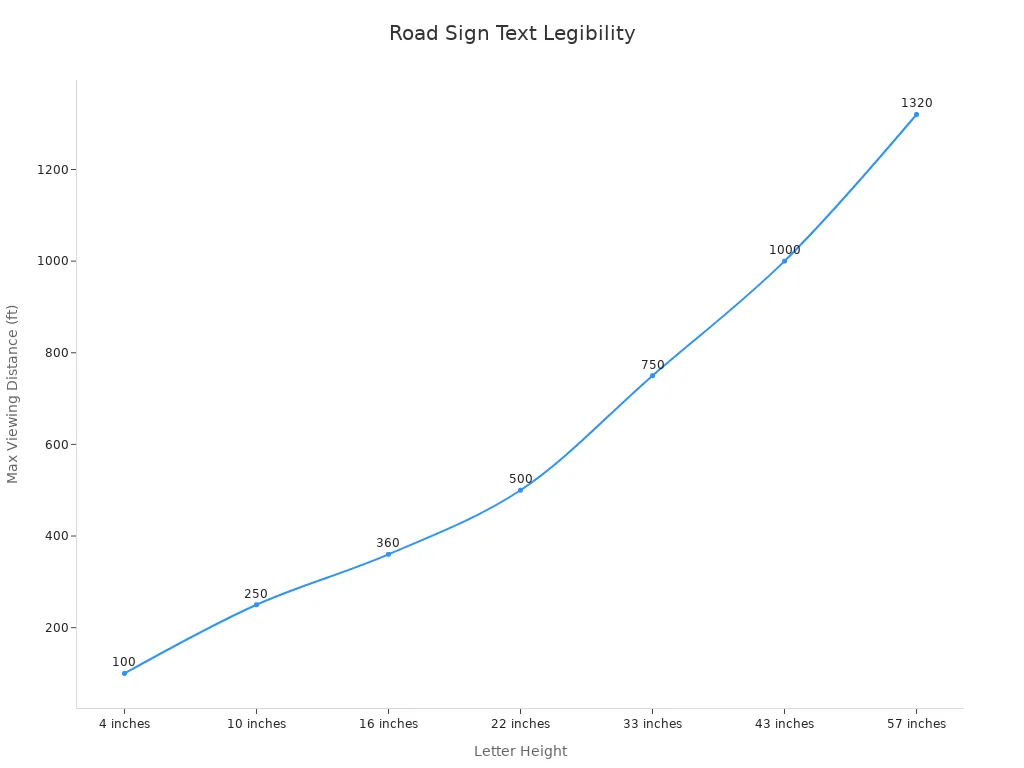
आपको हमेशा अच्छे संकेतों का उपयोग करना चाहिए जो स्थानीय और अंतर्राष्ट्रीय दोनों नियमों का पालन करते हैं. यह हर किसी को सड़क पर संकेतों को देखने और समझने का सबसे अच्छा मौका देता है.
दृश्य दूरी और सड़क संकेत आकार
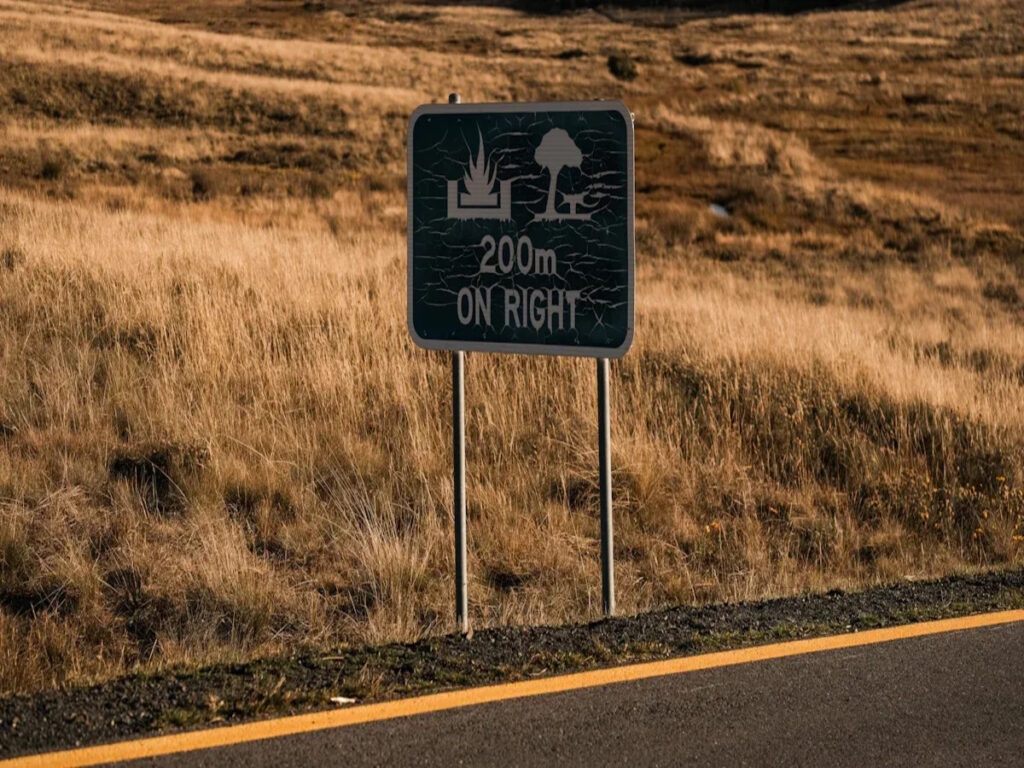
आकार देना नियम
ड्राइवर कितने दूर हैं, इसके लिए आपको सही साइन आकार चुनना होगा. यह सुनिश्चित करता है कि संकेत पढ़ना आसान है. आपकी मदद करने के लिए एक सरल नियम है. अक्षर की ऊंचाई के हर इंच के लिए, ड्राइवर इसके बारे में पढ़ सकते हैं 10 फ़ुट दूर. यदि आप चाहते हैं कि एक संकेत से पढ़ा जाए 100 पैर, उन अक्षरों का उपयोग करें जो हैं 10 इंच लंबा. यह नियम अधिकांश बाहरी संकेतों के लिए काम करता है.
यहां एक तालिका है जो दिखाती है कि कितने बड़े अक्षर आपको दूर से संकेत देखने में मदद करते हैं:
| पत्र ऊंचाई (इंच) | इष्टतम देखने की दूरी (पैर) | अधिकतम पठनीय दूरी (पैर) |
|---|---|---|
| 3 | 30 | 100 |
| 4 | 40 | 150 |
| 6 | 60 | 200 |
| 8 | 80 | 350 |
| 9 | 90 | 400 |
| 10 | 100 | 450 |
| 12 | 120 | 525 |
| 15 | 150 | 630 |
| 18 | 180 | 750 |
| 24 | 240 | 1000 |
| 30 | 300 | 1250 |
| 36 | 360 | 1500 |
| 42 | 420 | 1750 |
| 48 | 480 | 2000 |
| 54 | 540 | 2250 |
| 60 | 600 | 2500 |
जब आप पत्रों को बड़ा बनाते हैं, लोग उन्हें आगे से पढ़ सकते हैं. यह आपको विभिन्न सड़कों और गति के लिए योजना बनाने में मदद करता है. यदि ड्राइवरों को दूर से संकेत पढ़ने की जरूरत है, बड़े अक्षरों का उपयोग करें. यह नियम आपको किसी भी सड़क के लिए सबसे अच्छा संकेत आकार चुनने में मदद करता है.
बख्शीश: हमेशा जांचें कि कितनी तेजी से कारें जाती हैं और कितनी दूर ड्राइवरों को आकार लेने से पहले साइन देखेंगे. बड़े संकेत ड्राइवरों को जल्दी से प्रतिक्रिया करने और सभी को सुरक्षित रखने में मदद करते हैं.
पठनीयता सीमा
आप चाहते हैं कि सभी ड्राइवर आसानी से संकेत पढ़ें, कोई फर्क नहीं पड़ता कि सड़क या मौसम. पढ़ने के लिए एक संकेत कितना आसान है, इसके आकार पर निर्भर करता है, फ़ॉन्ट, और यह कितनी दूर है. यदि आप सही साइन आकार का उपयोग करते हैं, संदेश को देखने और समझने के लिए ड्राइवरों के पास पर्याप्त समय है.
सड़क के संकेतों को पढ़ने के लिए यहां कुछ सामान्य दूरी दी गई है:
| हस्ताक्षर प्रकार / स्थिति | विशिष्ट पठनीय या पता लगाने की दूरी (एम) | नोट |
|---|---|---|
| के साथ मानक संकेत 170 मिमी उच्च पाठ | ~ 115 | विशिष्ट परिस्थितियों में पढ़ना दूरी |
| ग्राउंड-माउंटेड डायग्रामैटिक गाइड साइन्स | 125 | मेडियन हाईवे-फ्रीवे इंटरचेंज से पहले पहली बार दूरी देखो |
| चेतावनी संकेत (ग्रामीण राजमार्ग) | 137 | औसत पहली लुक दूरी |
| आगे रुकें और संकेतों को रोकें (दिन) | 274 | दिन के दौरान पहले लुक की दूरी |
| आगे रुकें और संकेतों को रोकें (रात का समय) | 204 | रात के दौरान पहले लुक की दूरी |
| दोगुना संकेत क्षेत्र | +150 को +200 | के आधार रेखा से दूरी का पता लगाने में वृद्धि 600 एम |
| हेडलाइट्स प्रभाव का विरोध | -100 | आने वाली हेडलाइट्स के कारण 500-900 मीटर बेसलाइन से दूरी का पता लगाने में कमी |
आप देख सकते हैं कि बड़े संकेत या बड़े पत्र लोगों को उन्हें दूर से पढ़ने में मदद करते हैं. उदाहरण के लिए, दिन में स्टॉप साइन्स सामान्य संकेतों की तुलना में बहुत दूर से देखा जा सकता है. यदि आप दो बार बड़ा संकेत देते हैं, ड्राइवर इसे देख सकते हैं 200 मीटर आगे. लेकिन अन्य कारों से उज्ज्वल हेडलाइट्स द्वारा देखने के लिए संकेत कठिन बना सकते हैं 100 एम-eters.
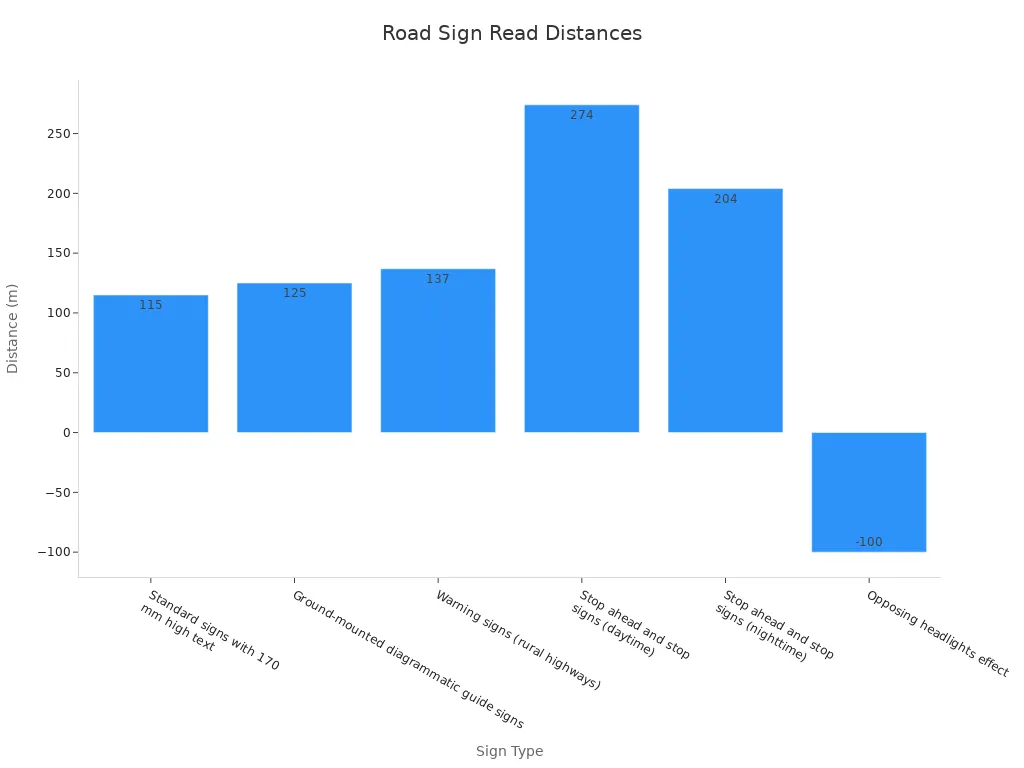
आपको हमेशा सबसे दूर दूरी के ड्राइवरों के बारे में सोचना चाहिए जो साइन देख सकते हैं. यह सभी को संकेत पढ़ने में मदद करता है, खराब मौसम में या रात में भी. बड़े संकेत सिर्फ स्पॉट करना आसान नहीं हैं - वे भी सड़कों को सुरक्षित बनाते हैं. जब आप सही आकार का उपयोग करते हैं, ड्राइवर संकेत जल्दी देख सकते हैं और सुरक्षित विकल्प बना सकते हैं.
टिप्पणी: अच्छे संकेत सही आकार का उपयोग करते हैं, स्पष्ट फोंट, और सबसे अच्छी जगह पर डाल दिया जाता है. यह सभी को सड़क पर सुरक्षित रहने का सबसे अच्छा मौका देता है.
साइन सुरक्षा और गुणवत्ता साइनेज को प्रभावित करने वाले कारक
फ़ॉन्ट और कंट्रास्ट
अधिकार चुनना साइन फॉन्ट और इसके विपरीत सड़कों को सुरक्षित रखने में मदद करता है. आसान-से-पढ़ने वाले फोंटों को समझने के लिए सरल बनाते हैं. बड़े अक्षरों की शैली और उपयोग बदलते हैं कि आप कितनी तेजी से संकेत पढ़ते हैं. ClearView फ़ॉन्ट आपको नकारात्मक विपरीत संकेतों को अधिक तेज़ी से पढ़ने देता है. हमेशा एक फ़ॉन्ट चुनें जो पृष्ठभूमि से बाहर खड़ा हो. अक्षरों और पृष्ठभूमि के बीच उच्च विपरीत संकेतों को देखने में आसान बनाता है. यह खराब मौसम या रात में बहुत महत्वपूर्ण है. विशेषज्ञों का कहना है कि आपको कम से कम की आवश्यकता है 70% सर्वश्रेष्ठ दृश्यता के लिए विपरीत. मैट साइन्स पर फिनिश स्टॉप चकाचौंध, इसलिए प्रतिबिंब आपको विचलित नहीं करते हैं. पत्र और प्रतीकों में कम से कम होना चाहिए 70% पृष्ठभूमि के साथ प्रकाश परावर्तन मूल्य विपरीत. इस तरह, रोड साइन डिज़ाइन सभी ड्राइवरों को सुरक्षित रहने में मदद करता है.
बख्शीश: संकेतों पर समान रंगों और स्पष्ट फोंट का उपयोग करें. यह ड्राइवरों को महत्वपूर्ण जानकारी को तेजी से स्पॉट करने में मदद करता है.
नियुक्ति और प्रकाश व्यवस्था
जहां आप संकेत देते हैं वह सुरक्षा के लिए महत्वपूर्ण है. ऐसे संकेत रखें जहां ड्राइवर उन्हें अपने सिर को मोड़ने के बिना देख सकते हैं. अच्छा साइन डिज़ाइन बिग या चौराहों जैसे बड़े निर्णय बिंदुओं पर संकेत देता है. पेड़ों या अन्य चीजों के पीछे संकेत न लगाएं जो उन्हें ब्लॉक करें. प्रकाश परिवर्तन करता है कि आप कितने अच्छे संकेत देखते हैं. दिन और रात दोनों को देखना आसान होना चाहिए. अंधेरे में खड़े होने के संकेतों को बनाने के लिए रोशनी या चिंतनशील सामग्री का उपयोग करें. जांचें कि संकेत पार्क की गई कारों या झाड़ियों द्वारा छिपे हुए नहीं हैं.
- ड्राइवरों के लिए आंखों के स्तर पर संकेत डालें.
- अंधेरे स्थानों में संकेतों के लिए रोशनी या चिंतनशील सतहों का उपयोग करें.
- संकेतों को स्पष्ट और देखने में आसान रखने के लिए अक्सर साइन प्लेसमेंट की जाँच करें.
चिंतनशील सामग्री
चिंतनशील सामग्री आप दूर से संकेत देखने में मदद करते हैं, खासकर रात में. सही सामग्री उन पर चमकती है जब हेडलाइट्स उन पर चमकते हैं. उन सामग्रियों को चुनें जो न्यूनतम रेट्रोरफ्लेक्टिविटी मानकों को पूरा करते हैं. नीचे दी गई तालिका से पता चलता है कि रंग और परावर्तन कैसे साइन डिज़ाइन और सुरक्षा को प्रभावित करते हैं:
| हस्ताक्षर प्रकार | रंग संयोजन | न्यूनतम प्रतिष्ठान (सीडी/एलएक्स/एम g) | विपरीत अनुपात आवश्यकता |
|---|---|---|---|
| ओवरहेड गाइड संकेत | हरे रंग पर सफेद | सफेद ≥ 250, हरे रंग का 25 | एन/ए |
| चेतावनी संकेत | पीले/नारंगी पर काला | ≥ 50 | एन/ए |
| संकेत रोकें | लाल रंग पर सफेद | सफेद ≥ 35, लाल ≥ 7 | ≥ 3:1 |
हमेशा उन सामग्रियों का उपयोग करें जो संकेतों को उज्ज्वल और लंबे समय तक स्पष्ट रखें. नियमित चेक और केयर मदद सड़क पर सभी के लिए संकेत सुरक्षित और उपयोगी हैं.
विभिन्न सड़कों के लिए गुणवत्ता साइनेज चुनना
गति और सड़क प्रकार
आपको अपने सड़क के किनारे के साइनेज को गति और प्रकार की सड़क के प्रकार से मिलान करना होगा. राजमार्गों पर, वाहन जल्दी से चलते हैं. ड्राइवरों के पास राजमार्ग संकेतों को पढ़ने के लिए कम समय होता है, इसलिए आपको बड़े अक्षरों और उज्जवल सामग्री का उपयोग करना चाहिए. उदाहरण के लिए, राजमार्ग के संकेत अक्सर बड़े पैनलों और चिंतनशील शीटिंग का उपयोग करते हैं ताकि ड्राइवरों को उन्हें दूरी से हाजिर करने में मदद मिल सके. अनुसंधान से पता चलता है कि उच्च गति का मतलब है कि आपको सुरक्षित मान्यता के लिए बड़े संकेतों की आवश्यकता है. यदि आप तेज सड़कों पर छोटे संकेतों का उपयोग करते हैं, ड्राइवर महत्वपूर्ण जानकारी याद कर सकते हैं.
यहां सड़क प्रकार द्वारा साइन साइज़ चुनने के लिए एक सरल मार्गदर्शिका है:
| सड़क प्रकार | विशिष्ट गति (किमी/घंटा) | अनुशंसित पत्र ऊंचाई (मिमी) | साइन आकार उदाहरण (मिमी) |
|---|---|---|---|
| अर्बन स्ट्रीट | 40-60 | 100-120 | 600 एक्स 900 |
| ग्रामीण मार्ग | 80-100 | 150-200 | 900 एक्स 1200 |
| एक्सप्रेसवे/हाईवे | 100+ | 200+ | 1200 एक्स 1800 |
आपको प्रत्येक चिन्ह पर शब्दों या सड़क के नामों की संख्या को भी सीमित करना चाहिए. बहुत अधिक जानकारी पढ़ने को धीमा कर देती है और जोखिम बढ़ाती है. विशेषज्ञों ने इसे प्रति संकेत 2-7 वस्तुओं पर रखने का सुझाव दिया. यह ड्राइवरों को संदेश को कम करने में मदद करता है 2.5 सेकंड.
बख्शीश: कम से कम राजमार्ग संकेत दें 4 जमीन के ऊपर पैर. रात में सर्वश्रेष्ठ दृश्यता के लिए आगे की ओर प्रकाश या उच्च श्रेणी के चिंतनशील सामग्री का उपयोग करें.
विशेष वातावरण
कुछ स्थानों को विशेष सड़क के किनारे साइनेज की आवश्यकता होती है. घटता, चौराहों, और स्कूल ज़ोन सभी को अतिरिक्त देखभाल की आवश्यकता होती है. तेज झुकना के लिए, वक्र के त्रिज्या के आधार पर शेवरॉन संकेत बड़े और स्थान पर होना चाहिए. अध्ययनों से पता चलता है कि अच्छी तरह से रखे गए शेवरॉन संकेत दुर्घटनाओं को कम करते हैं और ड्राइवरों को सुरक्षित रूप से धीमा करने में मदद करते हैं. खराब रोशनी वाले क्षेत्रों में, उज्जवल चिंतनशील सामग्री का उपयोग करें. पुराने ड्राइवरों या पर्यटन मार्गों के लिए, उन्हें पढ़ने के लिए आसान बनाने के लिए राजमार्ग संकेतों के आकार में वृद्धि.
आपको सार्वजनिक सड़कों के लिए मानकों का पालन करना चाहिए, जैसे 1742 या mutcd. निजी सड़कों या कार पार्कों पर, आपके पास अधिक लचीलापन है, लेकिन सार्वजनिक सड़क मानकों का उपयोग करने से सभी को सुरक्षित रखा जाता है. हमेशा जांचें कि आपका साइनेज आपके सड़क उपयोगकर्ताओं और पर्यावरण की जरूरतों से मेल खाता है.
सही साइन आकार और पाठ ऊंचाई को चुनने से सड़कों को सुरक्षित रखने में मदद मिलती है. जब आप नियमों का पालन करते हैं, ड्राइवर तेजी से संकेत देख और पढ़ सकते हैं. अनुसंधान से पता चलता है कि लोग जानते हैं कि संकेत आसानी से उन्हें जल्दी से प्रतिक्रिया करने और कम त्रुटियां करने में मदद कर सकते हैं. उज्ज्वल और अच्छी तरह से जलाने वाले संकेत पढ़ने में आसान हैं, रात को भी.
इस बारे में अधिक जानने के लिए कि साइन साइज़ कैसे निर्धारित किए जाते हैं और वे दृश्यता और अनुपालन के लिए क्यों मायने रखते हैं, हमारे ब्लॉग पढ़ें: ऑस्ट्रेलिया में ट्रैफिक साइन साइज़ स्टैंडर्ड्स: एक पूर्ण गाइड.
अक्सर पूछे जाने वाले प्रश्न
मेरी सड़क के लिए सही साइन आकार चुनने का सबसे अच्छा तरीका क्या है?
आपको साइन आकार को गति सीमा और देखने की दूरी से मिलान करना चाहिए. तेज सड़कों के लिए बड़े अक्षरों का उपयोग करें. हमेशा अपने क्षेत्र के लिए नवीनतम मानकों की जाँच करें. यह आपको सभी को सुरक्षित रखने में मदद करता है.
रात में रोड साइन पठनीयता को कैसे प्रभावित करता है?
प्रकाश आपको अंधेरे के बाद स्पष्ट रूप से संकेत देखने में मदद करता है. चिंतनशील सामग्री का उपयोग करें या खराब रोशनी वाले क्षेत्रों में संकेतों में रोशनी जोड़ें. अच्छी रोशनी के संकेत बाहर खड़े होते हैं और लापता महत्वपूर्ण जानकारी के जोखिम को कम करते हैं.
कुछ संकेत अलग -अलग रंगों और फोंट का उपयोग क्यों करते हैं?
अलग -अलग रंग और फोंट आपको हाजिर करने और संकेतों को जल्दी से समझने में मदद करते हैं. उदाहरण के लिए, लाल का अर्थ है रुकें या खतरे. स्पष्ट फोंट पढ़ने को आसान बनाते हैं. सही शैली का उपयोग सुरक्षा में सुधार करता है और आपको तेजी से प्रतिक्रिया करने में मदद करता है.
क्या मैं निजी संपत्ति पर छोटे संकेतों का उपयोग कर सकता हूं?
आप निजी सड़कों या कार पार्कों पर छोटे संकेतों का उपयोग कर सकते हैं. तथापि, मानक आकारों का उपयोग करने से सभी के लिए सुरक्षा में सुधार होता है. ड्राइवर परिचित संकेतों की उम्मीद करते हैं. सार्वजनिक सड़क मानकों का पालन करने से लोगों को दिशाओं को समझने और पालन करने में मदद मिलती है.

